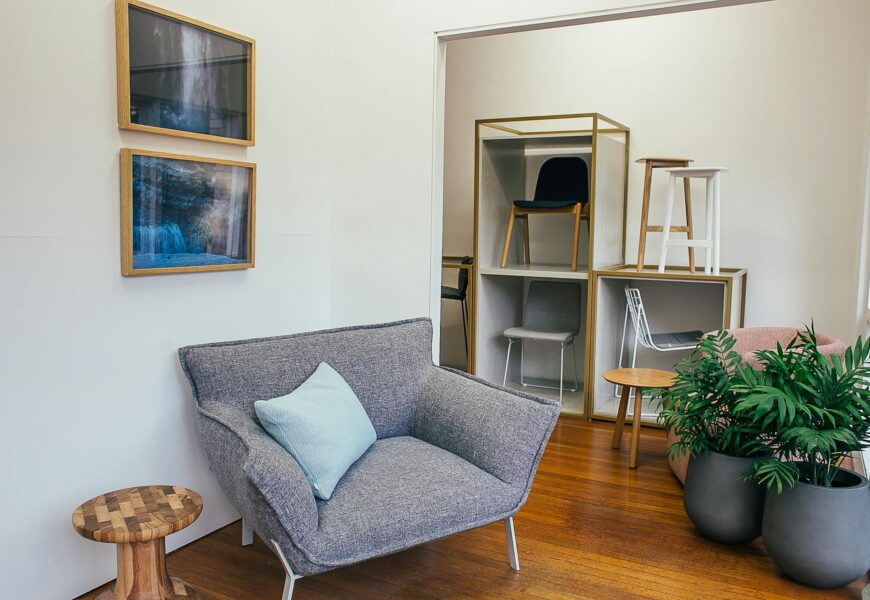Experience year-round greenery, cleaner air, and a touch of enchantment with indoor gardening! It’s not just a trend, it’s a way to transform your living space into a lively sanctuary. Don’t let any restrictions hold you back – indoor gardening for beginners allows you to establish a deep connection with nature and savor the benefits of houseplants and fresh herbs every day.
This comprehensive guide serves as your roadmap to creating a flourishing indoor oasis, even if you’re a novice gardener. We will provide you with all the essential information, from selecting air-purifying plants to perfecting watering techniques. Prepare to relax, embrace green living, and revel in the tranquility of nature throughout the year!
Year-round greenery, fresher air, and a touch of homegrown magic – that’s the promise of indoor gardening!
This isn’t just a hobby; it’s a gateway to transforming your living space into a vibrant oasis. Forget seasonal limitations – cultivate a connection with nature and enjoy the benefits of fresh herbs and plants every day.
Nature’s Built-in Air Purifiers:
Houseplants are so much more than aesthetics. Research by Dr. B.C. Wolverton for NASA revealed that even one plant per 100 square feet can significantly improve air quality. These leafy heroes remove common indoor pollutants like formaldehyde, benzene, and carbon monoxide, keeping your breathing space healthy. Read more in this article.
Top Picks for Clean Air Champions:
- Bamboo Palm: Elegant and effective, this low-maintenance beauty cleans the air while adding a touch of the tropics.
- Chinese Evergreen: Known for its vibrant foliage, this resilient plant thrives in various lighting conditions.
- Peace Lily: This graceful plant boasts beautiful white flowers and impressive air-purifying abilities. Bonus: it thrives in medium-light settings.
Fresh From Your Windowsill: The Herb Garden Advantage
For the culinary enthusiast, herbs are the superstars of indoor gardening. Not only are they visually appealing, but they bring fresh, aromatic flavors straight to your kitchen. Grow your favorites – from basil and thyme to rosemary and mint – and enjoy the convenience of snipping them straight for your next culinary creation.
Getting Started with Indoor Gardening!
Head to a reputable garden center for expert advice and high-quality plants. Basic gardening tools like a trowel, gloves, organic fertilizer, and containers can get you started (most folks already have these essentials!).
Light Up Your Indoor Garden Success:
- Sun Seekers: Most plants crave at least six hours of daily sunlight. Aim for east or south-facing windows for optimal light.
- Temperature Matters: Mimic natural conditions by keeping things between 60-80°F during the day and slightly cooler at night.
- Watering Wisdom: Avoid overwatering! Water only when the soil feels dry to the touch. During winter, mist your plants occasionally to maintain humidity.
- Drainage is Key: Choose pots with drainage holes to prevent waterlogging and root rot.
- Feed Me! (But Not Too Much): Fertilization needs vary by plant type. A general indoor plant fertilizer is usually sufficient, but some plants might require specific formulas (like orchids).
Low Light Gems
Even without abundant natural light, you can cultivate a thriving indoor garden. These shade-loving plants will flourish:
- Philodendrons: Easy to care for, these come in a variety of shapes and sizes, adding lushness to any space.
- Boston Ferns: With their graceful fronds, these plants add a touch of the rainforest to your indoor jungle.
- African Violets: These vibrant flowering beauties bring a pop of color and require minimal light.
Embrace the Greenery:
Indoor gardening is a delightful and accessible way to add life and well-being to your home. Explore your local nursery, choose plants that complement your style and space, and with a little TLC, watch your indoor oasis flourish. Breathe easy, live green, and enjoy the serenity of nature all year round!
Bonus Tip: For even more inspiration and plant care resources, visit the United States Botanic Garden (https://www.usbg.gov/) or the National Gardening Association websites (https://garden.org/).







